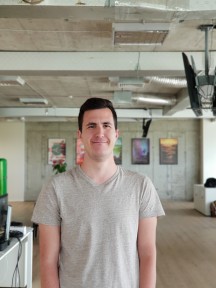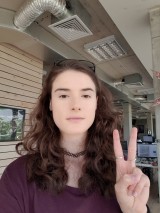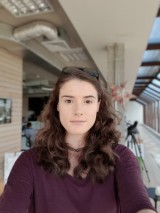Huawei P20 Pro vs. Samsung Galaxy S9+

Low light
One of the key points in the Huawei P20 Pro's promo materials is its night mode - an advanced pseudo-long exposure mode with frame stacking. It takes one initial shot to establish what's in the frame and then starts adding more light, selectively, in darker areas. You should keep still, obviously, but not as still as in a real 4-second exposure. Even so, not all photos are keepers.



Low-light samples: P20 Pro Night mode • P20 Pro photo mode • Galaxy S9+



Low-light samples: P20 Pro Night mode • P20 Pro photo mode • Galaxy S9+



Low-light samples: P20 Pro Night mode • P20 Pro photo mode • Galaxy S9+
Night mode can result in dreamy, fairytale-like images when there are lights in different colors in the photo, and it can also develop darker shadows in more subdued lighting. Oftentimes shooting this way will produce details you aren't seeing while you're there looking at reality.
Point sources of light, on the other hand, won't be as overexposed as on other phones, because the P20 Pro will simply selectively stop exposing those areas. On the flipside, Night mode can also introduce ghosts for moving subjects in the frame. Point being - it's not necessarily the better option for every scene.
Meanwhile, the Galaxy S9+ has that extra wide aperture, optical stabilization, image stacking of its own, and some very advanced noise reduction algorithms, so it's not exactly a slouch either. The best bit about is perhaps that you don't have to deliberate which mode to use - Auto works just fine.



Low-light samples: P20 Pro Night mode • P20 Pro photo mode • Galaxy S9+



Low-light samples: P20 Pro Night mode • P20 Pro photo mode • Galaxy S9+



Low-light samples: P20 Pro Night mode • P20 Pro photo mode • Galaxy S9+
One side effect of the Huawei's Night mode processing is that fine textures tend to be chiseled away resulting in more paintbrush-like look. It's visible when you zoom in up close, while the photos look livelier on the phone's display and when viewed at fit to screen magnification on a computer.



Low-light samples: P20 Pro Night mode • P20 Pro photo mode • Galaxy S9+



Low-light samples: P20 Pro Night mode • P20 Pro photo mode • Galaxy S9+



Low-light samples: P20 Pro Night mode • P20 Pro photo mode • Galaxy S9+
In any case, we're liking the low-light output from both these cameras. The Galaxy is easier to live with, because you just snap away without much thought, but on the P20 Pro you can get some pretty amazing shots with Night mode, given the right scene, while the regular mode images are at least as Good as the Galaxy's.
Portraits
As we mentioned, the P20 Pro has a couple of faux bokeh modes, one called Portrait, the other - Aperture. We shot in both, naturally, as well as in the Galaxy's Live focus mode.

First off, let's say that the Huawei is better suited to portraits to begin with, thanks to is 80mm-equivalent lens, than the Galaxy with its 52mm-equivalent optics - it lets you stand back from your subject plus there's some optical background blur to be had, even before you start with the faux stuff. Yes, we shot the P20 Pro exclusively in its 3x setting, because wide-angle portraits are just not right.



Bokeh samples: P20 Pro Aperture mode • P20 Pro Portrait mode • Galaxy S9+ Live focus
Of the two modes on the P20 Pro, the Portrait one is better suited to human subjects. Aperture mode produces weird blotches on faces, also making them softer in the process - hence our team member's sad face. The Galaxy's Live focus mode does make for warmer and generally more pleasing skin tones.



Bokeh samples: P20 Pro Aperture mode • P20 Pro Portrait mode • Galaxy S9+ Live focus
Selfies
The selfie contest this time around is an easy one - the Galaxy just wins. Hold on, what happened to the 3:1 resolution advantage of the P20 Pro? Well, 24MP is fine and dandy and you can, indeed, extract heaps of detail from its front-facing cam, only you need to be a particular distance away from the phone, and we find it to be too close. The Galaxy is a lot more versatile thanks to its autofocusing 8MP shooter.
There are the mandatory beautification modes on both phones, and they'll do an equally fine job of removing skin imperfections (along with all texture and potentially eyelashes). Also available are faux-bokeh selfies, again with similarly good subject separation, though the P20 Pro's subject is also blurry, because fixed focus.




P20 Pro selfie samples: Regular • Half beautification • All of it • Faux bokeh




Galaxy S9+ selfie samples: Regular • Half beautification • All of it • Faux bokeh
Reader comments
- Min
- 31 Jul 2020
- mE0
definitely s9+ Dont be fooled by the camera MegaPixels , have a look in display resolution with is JUST (407 PPI) While s9+ comes with (530 PPI) +dual appeture camera sensor My opinion would be 100% for s9+





